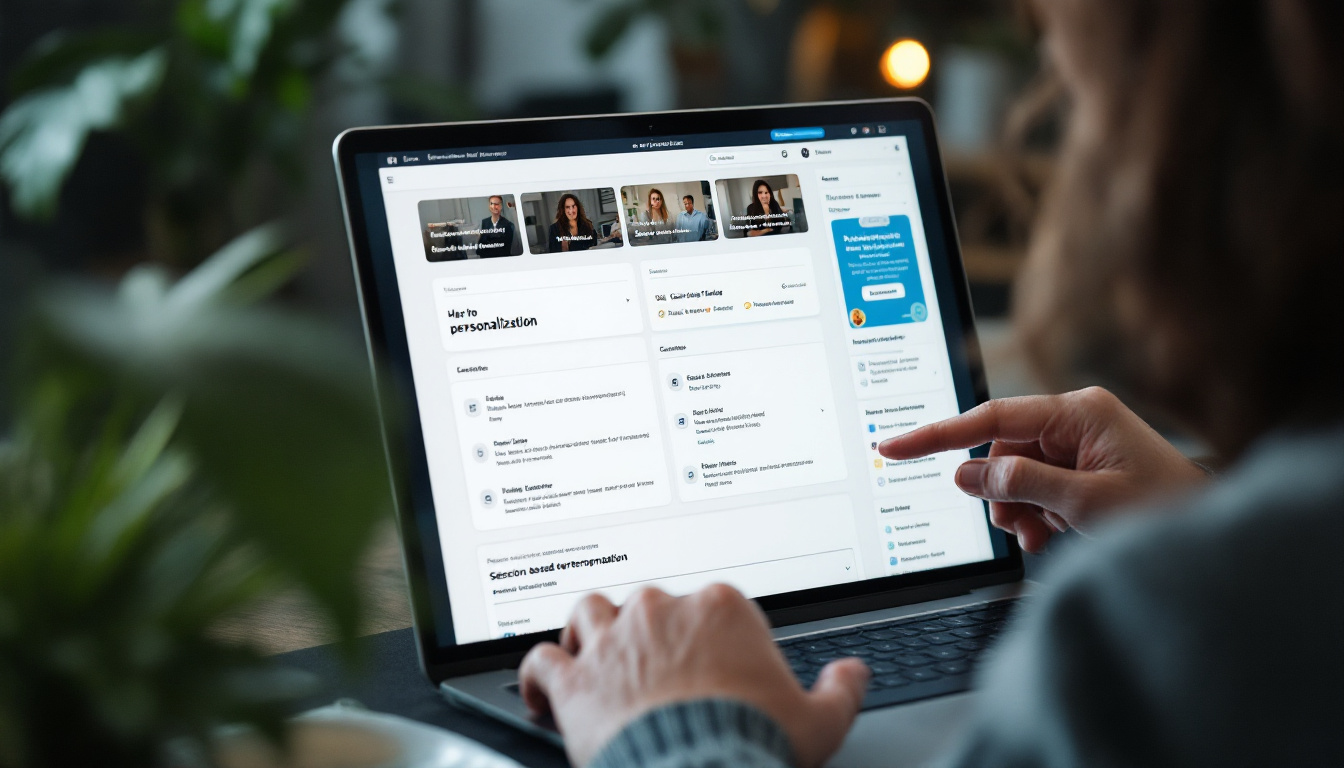What is session-based personalization?
Session-based personalization is a marketing strategy that tailors the user experience based on the user’s behavior during a single session. It is a dynamic form of personalization that adapts to the user’s actions in real-time, enhancing the user’s engagement and increasing the likelihood of conversion.
As part of a broader personalization strategy, session-based personalization aims to deliver a unique and relevant experience to each user. It leverages data collected during the user’s session, such as their browsing behavior, clicked links, and viewed products, to customize the content and offers presented to the user.
Understanding Session-Based Personalization
Session-based personalization is built on the principle that every interaction a user has with a website or application provides valuable insights into their preferences and intentions. By analyzing these interactions, marketers can tailor the user experience to match the user’s needs and interests, thereby enhancing user satisfaction and increasing the likelihood of conversion.

Unlike other forms of personalization, which may rely on historical data or predefined user segments, session-based personalization is dynamic and real-time. It adapts to the user’s behavior within a single session, allowing for a highly responsive and personalized user experience.
Key Components of Session-Based Personalization
The effectiveness of session-based personalization depends on several key components. First, it requires a robust data collection and analysis system that can track and interpret user behavior in real-time. This system must be capable of capturing a wide range of user interactions, from page views and clicks to form submissions and purchases.
Second, session-based personalization requires a flexible content delivery system that can adapt to the user’s behavior. This system must be capable of presenting personalized content and offers based on the user’s actions, such as recommending products based on the user’s browsing behavior or offering discounts based on the user’s purchase history.
Benefits of Session-Based Personalization
Session-based personalization offers several benefits for both businesses and users. For businesses, it can increase conversion rates, enhance user engagement, and improve customer retention. By delivering a personalized user experience, businesses can better meet the needs of their customers, leading to increased satisfaction and loyalty.
For users, session-based personalization can enhance the browsing experience by making it more relevant and engaging. By presenting content and offers that match the user’s interests and needs, session-based personalization can make the browsing experience more enjoyable and rewarding.
Implementing Session-Based Personalization
Implementing session-based personalization requires a combination of technology, data, and strategy. The first step is to establish a robust data collection and analysis system. This system should be capable of tracking a wide range of user interactions in real-time, from page views and clicks to form submissions and purchases.

The next step is to develop a flexible content delivery system that can adapt to the user’s behavior. This system should be capable of presenting personalized content and offers based on the user’s actions. It should also be capable of testing and optimizing different personalization strategies to maximize their effectiveness.
Data Collection and Analysis
Data collection and analysis are critical to the success of session-based personalization. By tracking and interpreting user behavior, marketers can gain valuable insights into the user’s preferences and intentions. This data can then be used to tailor the user experience, delivering personalized content and offers that match the user’s needs and interests.
There are several tools and techniques available for data collection and analysis. These include web analytics tools, which can track user behavior on a website or application; customer relationship management (CRM) systems, which can track interactions with customers across multiple channels; and machine learning algorithms, which can analyze large volumes of data to identify patterns and trends.
Content Delivery and Optimization
Once the data has been collected and analyzed, the next step is to deliver personalized content and offers to the user. This requires a flexible content delivery system that can adapt to the user’s behavior in real-time. The system should be capable of presenting different types of content, from product recommendations and personalized offers to tailored landing pages and email campaigns.
In addition to delivering personalized content, the system should also be capable of testing and optimizing different personalization strategies. This can be achieved through A/B testing, which involves presenting two different versions of a page or element to different users and comparing their performance. By testing different strategies, marketers can identify the most effective approaches and continuously improve their personalization efforts.
Challenges and Considerations in Session-Based Personalization
While session-based personalization offers many benefits, it also presents several challenges. One of the main challenges is the need for real-time data collection and analysis. This requires a robust and scalable technology infrastructure, as well as advanced analytics capabilities. Additionally, session-based personalization requires a deep understanding of the user’s behavior and preferences, which can be difficult to achieve without sufficient data or expertise.
Another challenge is the need for a flexible and responsive content delivery system. This system must be capable of adapting to the user’s behavior in real-time, presenting personalized content and offers based on the user’s actions. This requires a high degree of customization and personalization, which can be difficult to achieve without the right technology and expertise.
Privacy and Consent
Another important consideration in session-based personalization is the issue of privacy and consent. As session-based personalization involves collecting and analyzing user data, it is essential to ensure that this is done in a way that respects the user’s privacy and complies with relevant data protection regulations.
This means obtaining the user’s consent before collecting their data, providing clear and transparent information about how their data will be used, and offering the user the ability to opt-out of data collection if they choose. It also means implementing robust security measures to protect the user’s data from unauthorized access or misuse.
Technology and Infrastructure
Implementing session-based personalization also requires a robust and scalable technology infrastructure. This includes a data collection and analysis system capable of tracking and interpreting user behavior in real-time, as well as a flexible content delivery system capable of presenting personalized content and offers based on the user’s actions.
There are many technology solutions available to support session-based personalization, from web analytics tools and customer relationship management (CRM) systems to machine learning algorithms and content management systems (CMS). However, selecting the right tools and integrating them into a cohesive system can be a complex and challenging task.
Future of Session-Based Personalization
The future of session-based personalization looks promising, with advances in technology and analytics paving the way for more sophisticated and effective personalization strategies. As data collection and analysis techniques become more advanced, marketers will be able to gain deeper insights into user behavior and deliver more personalized and relevant experiences.

At the same time, advances in content delivery and optimization technologies will enable marketers to deliver personalized content and offers more effectively and efficiently. This will enhance the user experience, increase conversion rates, and improve customer retention.
Role of Artificial Intelligence
Artificial Intelligence (AI) is expected to play a significant role in the future of session-based personalization. AI can analyze large volumes of data quickly and accurately, identifying patterns and trends that can inform personalization strategies. It can also automate the delivery of personalized content and offers, making the process more efficient and scalable.
Machine learning, a subset of AI, is particularly relevant to session-based personalization. Machine learning algorithms can learn from data, improving their performance over time. This makes them highly effective at analyzing user behavior and predicting user preferences, enabling more accurate and effective personalization.
Impact of Privacy Regulations
The future of session-based personalization will also be shaped by changes in privacy regulations. As data protection laws become more stringent, businesses will need to be more transparent about how they collect and use user data. This may require changes in how data is collected, how consent is obtained, and how personalization is implemented.
Despite these challenges, the potential benefits of session-based personalization make it a promising strategy for businesses. By delivering a personalized and engaging user experience, businesses can increase conversion rates, enhance customer loyalty, and gain a competitive edge in the market.
